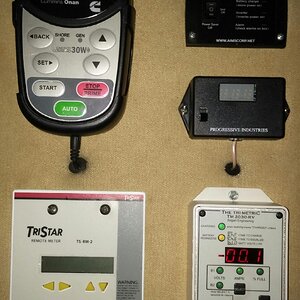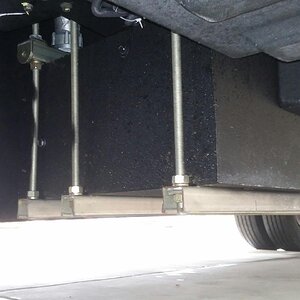Here is an answer regarding tire temps that have some interesting points. Excess temps apparently do not register on the surface of the tire but remain on the interior of the tire and the inside temps are what is measured by the TPMS..
"Regarding critical temperature: For short term (minutes or seconds), I would consider structural temperatures in the 205 F – 230 F to be critical. Size, brand or design – doesn’t make much difference. The problem is there is no way to measure the temperature as the hottest location is at the edges of the radial belts. In racing, like at Indy, we use a needle probe and stick this into the tire about 1/4″ to 3/8″ deep.
External surface temperatures are much cooler because of external air moving over the surface. With rubber being such a good insulator, the heat does not travel to the surface fast enough (minutes) relative to the ability of the temperature to rise (seconds) at the critical location we see it, so it’s possible to have internal rubber failure before the surface temperature gets to a critical point.
I think you can understand that the rubber can get softer with an increase in temperature. As it gets softer, it stretches more, and as it stretches more it gets hotter, etc. Up to about 210 F, this increased softness can be managed with construction and thickness design changes, but each of those changes can result in some other property getting worse. Also, that 210 F point changes with time and temperature history.
Tire design is a balancing act and a series of trade-offs. One thing that happens with a loss of strength and increased bending is the potential for tearing of the rubber at the molecular level, which can result ultimately with the tearing to grow to the width of the belts, which in turn results in a belt separation.
BUT the key thing to understand is that temperature damage is cumulative and the chemical reaction that occurs can eventually result in a loss of elasticity at higher temperatures so the rubber tears, which leads to a separation. The rate of these changes can itself change over time and the rate is also affected by the temperature.
Even for a single rubber compound, there is no exact temperature for it to “fail.” The physical properties of rubber changes with temperature, but here there is no exact point at which the strength goes from 100% to zero.
A TPMS gives an approximate temperature of the air inside a tire, which is also lower than the critical temperature. Most TPMSs have a high-temperature warning set to 158 F, and if you see that reading then you do not have enough pressure for the load you have or are driving too fast. This does not mean you can lower pressure till you see a reading of 158 as you are still doing damage and “consuming” the finite life of the rubber in a tire.
Read my blog, learn the actual load (when the RV is its heaviest) for each tire position (4 corner weights), consult the tables, learn the MINIMUM inflation pressure, add a +10% inflation margin to learn your “cold set pressure” for each axle based on the heaviest axle end, and adjust your TPMS low pressure level to never be lower than the minimum. Then go and enjoy your RV.
Read more from Roger Marble on his blog at RVtiresafety.net."












